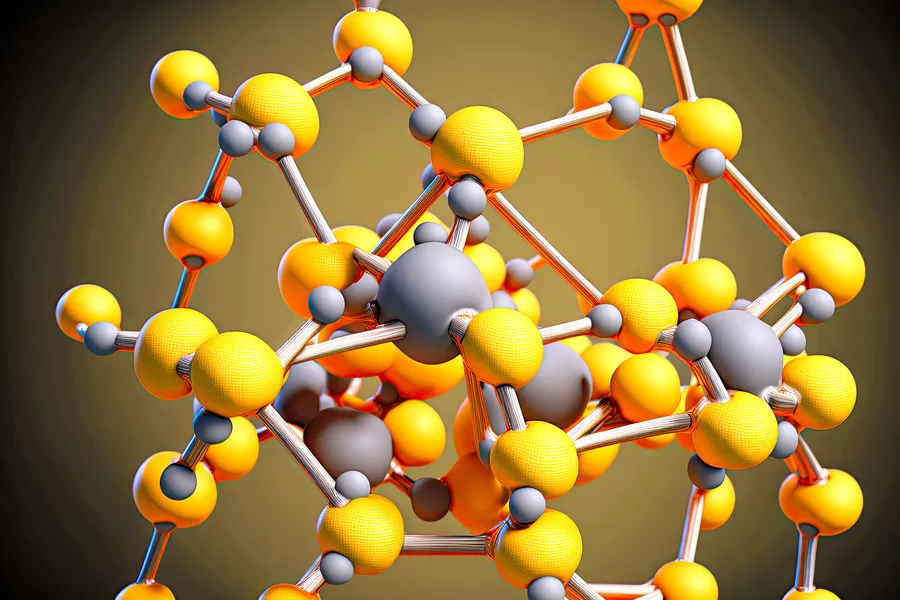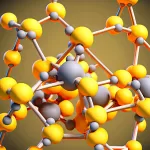
Have you ever wondered how some people seem to have endless energy, effortlessly manage their weight, and boast glowing health from the inside out? The secret might just lie in the microscopic world of amino acids. These tiny yet mighty nutrients are the unsung heroes behind muscle building, fat loss, and even mental well-being. But here’s the twist – not all amino acids are created equal, and understanding their unique roles can transform your approach to health and fitness.
Ready to transform your body and mind with the power of amino acids?
Amino Acids
Two Teams: The Must-Haves and the DIYs
In the world of amino acids, there are twenty types. Imagine two teams. One team, called ‘essential,’ can’t be made by our body. We need to get them from eating foods like chicken, fish, beans, and nuts. The other team, called ‘non-essential,’ is made by our body, so we don’t need to worry about getting them from food.
What Do These Essential Amino Acids Do?
Each essential amino acid does something special. For example, one helps fix our muscles after we play sports or exercise, and another helps us feel happy and sleep well. The non-essential ones are also important because they help give us energy and make sure everything in our body is working as it should.
Not Just for Building Muscles
But amino acids do more than just help build muscles and fix stuff. They’re also behind the scenes making sure our brain works well, helping us feel good, and keeping us healthy. For example, some amino acids help make happy chemicals in our brain, which makes us feel awesome.
Muscle Factories: Fueled by Amino Acids
BCAAs
Amidst the vast landscape of amino acids, the BCAAs — branched-chain amino acids — stand out. This trio, comprising leucine, isoleucine, and valine, forms a formidable force that champions muscle regeneration and resilience post-exercise. Imagine tiny warriors repairing the micro-tears from your latest workout, reducing aches and prepping you for your next physical challenge. This not only enhances muscle fortitude but also escalates the passive calorie burn, a boon for weight watchers.
Leucine
Leucine, the vanguard of the BCAA battalion, signals your muscles to enter growth mode, rallying them to bulk up. Its comrades, isoleucine and valine, back it up by fueling the muscles with vitality, ensuring you get the most from your fitness endeavors.
Calorie Incineration
Beyond sculpting a muscular frame, increasing muscle mass kickstarts your body into a relentless calorie-incinerating mode. Muscles outpace fat in calorie consumption, even in rest. Elevating your muscle mass boosts your basal metabolic rate (BMR), the calorie count your body burns simply to keep the lights on. A spiked BMR means your body is on calorie-burning autopilot, aiding your weight loss journey.
Feeding Muscle Growth Naturally
Accessing the muscle-building and calorie-burning perks of amino acids doesn’t necessarily mean turning to supplements. A diet brimming with proteins from sources like poultry, seafood, eggs, dairy, legumes, and nuts packs a potent punch of BCAAs. Fuelling your body directly from your plate not only supports muscle enhancement but also propels your physique into a more efficient, calorie-burning state, streamlining your path to weight control.
Amino Acids for Fat Loss
Amino acids are not just building blocks for muscles; some of them are like secret agents that help zap fat. Let’s talk about three special agents: arginine, carnitine, and glutamine. These guys are known for their skills in boosting how our body deals with fat, making them allies in our quest to lose weight.
- Arginine: First up is arginine. This process helps your body burn more fat, especially when you’re active, leading to weight loss.
- Carnitine: Here, fat is turned into energy that our body can use. Without enough carnitine, fat can’t get to where it needs to go to be burned off, so having plenty of it helps make sure fat is used for good, not just hanging around.
- Glutamine: By helping maintain a healthy gut, it can make you feel fuller for longer and avoid those pesky cravings that sabotage your diet. Plus, glutamine helps keep your blood sugar levels stable, which means you’re less likely to reach for sugary snacks.
Together, these three amino acids form a powerhouse team that supports your body’s ability to burn fat more efficiently, control cravings, and manage weight. By including foods rich in arginine (like nuts, seeds, and seafood), carnitine (found in meat and dairy), and glutamine (in dairy, eggs, and some vegetables) in your diet, you’re giving your body extra help in the fight against fat. No need for fancy supplements; just eating the right foods can boost your intake of these helpful amino acids.
Amino Acids: Mastering Appetite Control
Battling hunger on a weight loss journey feels like a constant struggle. Yet, amino acids, those tiny powerhouses in protein, play a crucial role in taming our appetite. They act like natural appetite suppressants, making us feel satisfied longer, thus helping us cut down on unnecessary snacking.
The Satiety Signalers
Among the amino acids, phenylalanine shines as a hunger manager. It triggers the release of cholecystokinin, a hormone acting as a fullness flag to our brain. This signal helps us put down the fork, promoting a feeling of satisfaction and reducing the likelihood of overindulging.
Protein: The Long-Lasting Fuel
Foods rich in protein are like slow-burning logs on a fire; they keep us feeling full much longer than quick-burning carbs or fats. This slow digestion process means our hunger is kept at bay for extended periods. Staples such as lean meats, legumes, and certain dairy items are not just nutritious; they’re strategic allies in hunger management.
Craving Crushers
Amino acids also come to our rescue by stabilizing blood sugar levels, which in turn helps fend off sudden cravings for sweets or fatty treats. It’s like having a constant, calming influence on our dietary choices, steering us away from impulsive snacking that can sabotage our weight loss efforts.
Embracing a diet that includes a variety of protein sources ensures we leverage the appetite-controlling power of amino acids. This strategy isn’t about eating less but about eating smarter. By making amino acids our allies, we set the stage for more effective weight management, keeping those hunger pangs in check and moving steadily towards our weight loss objectives.
How to Incorporate Amino Acids into Your Diet
Boosting your intake of these critical nutrients doesn’t have to involve supplements. Nature’s bounty, in the form of various foods, provides everything your body requires. Focusing on a diet rich in quality protein ensures you’re naturally absorbing what you need for muscle maintenance and efficient fat burning.
Diverse Sources of Protein
Including a strong protein component in each meal sets the foundation. Animal proteins, such as poultry, red meat, and seafood, not only offer a rich source of these nutrients but also bring along beneficial omega-3 fatty acids. For those on a plant-based diet, dairy, eggs, beans, lentils, and nuts are excellent alternatives, packing a powerful nutrient punch that supports your body’s needs.
Mixing It Up for Maximum Benefit
Variety isn’t just the spice of life; it’s also a strategic approach to nutrition. Rotating your protein sources ensures a broad spectrum of these building blocks, covering the entire range your body requires. Experiment with different meats, fish, dairy, and plant proteins to keep your meals interesting and nutritionally complete.
When to Consider Additional Support
Though whole foods are the best source of nutrition, there are circumstances where adding a supplement into your regimen makes sense. This might be due to specific lifestyle choices, such as veganism, or increased demands, such as intense physical training. Consulting with a healthcare professional can guide you in making an informed decision about supplement use.
With a thoughtful approach to your diet, achieving the right balance of nutrients is accessible and enjoyable. By valuing dietary diversity and seeking professional advice for supplement use, you can support your health goals without overcomplicating your nutrition strategy.
The Synergy Between Vitamins and Amino Acids
B-Vitamins
B-vitamins are like the body’s efficiency experts. They help your body use amino acids better. Think of B-vitamins as facilitators that enable your body to break down and utilize amino acids, the building blocks of proteins, more effectively. This helps in everything from repairing muscles to keeping your brain sharp.
Vitamin B6
One star player in the B-vitamin team is Vitamin B6. It’s super important for managing amino acids. B6 helps change some amino acids into others, making sure your body has the right kinds it needs. It also plays a part in making neurotransmitters, the brain’s messaging chemicals, from amino acids. Foods like chicken, fish, potatoes, and bananas are great sources of B6.
Folate and B12
Folate (B9) and Vitamin B12 are also crucial. They work with amino acids in making DNA, which is the blueprint for all cells. Without enough B9 and B12, your body might not make DNA properly, which can cause health problems. Leafy greens, eggs, and dairy are good for folate, while B12 is mostly found in animal products.
The Importance of a Varied Diet
This teamwork between vitamins and amino acids shows why eating a varied diet is key. Mixing up your food choices ensures you get a good balance of these nutrients. This doesn’t just help your body build and repair itself; it also keeps your energy levels up and your mind clear.
Conclusion
Unveiling the distinction between essential and non-essential amino acids sheds light on their critical functions in body repair, mood elevation, and energy enhancement. BCAAs (Leucine, Isoleucine, Valine) emerge as champions in facilitating muscle recovery, boosting metabolism, and enhancing caloric burn during rest periods. Noteworthy amino acids such as arginine, carnitine, and glutamine are celebrated for their targeted effects on fat trimming, appetite suppression, and glucose level regulation. Embracing a diet filled with a variety of protein sources naturally enriches your intake of vital amino acids, promoting holistic health without dependency on supplements. The dynamic cooperation between B-vitamins and amino acids underscores the significance of a nutritious, well-rounded diet for maximizing health benefits.
FAQs
Unlike non-essential amino acids that our bodies can create, essential amino acids must be obtained from what we eat, underscoring their necessity in our diet.
BCAAs, by speeding up muscle repair, enhancing metabolic rest activity, and improving energy deployment, become critical for sustained athletic performance and faster recovery phases.
These amino acids excel in promoting fat breakdown, diminishing appetite signals, and regulating sugar in the blood, supporting a strategic approach to weight management.
Absolutely, a calculated combination of varied plant proteins enables those on vegan or vegetarian diets to meet their essential amino acid requirements comprehensively.
They elevate the body’s efficiency in breaking down and absorbing amino acids, ensuring that individuals get the most out of their protein consumption.







